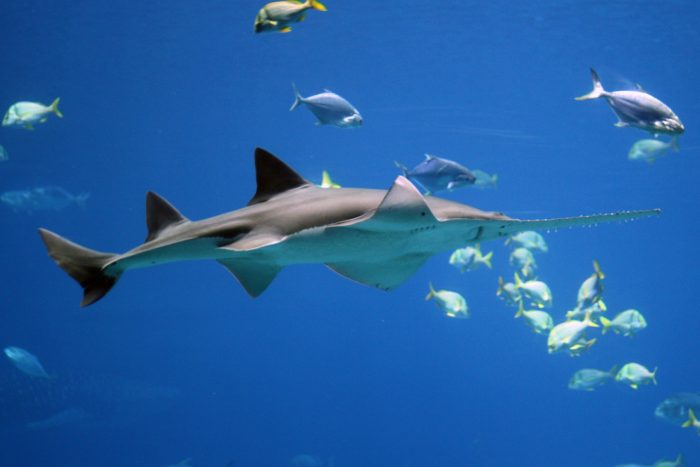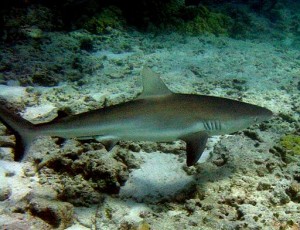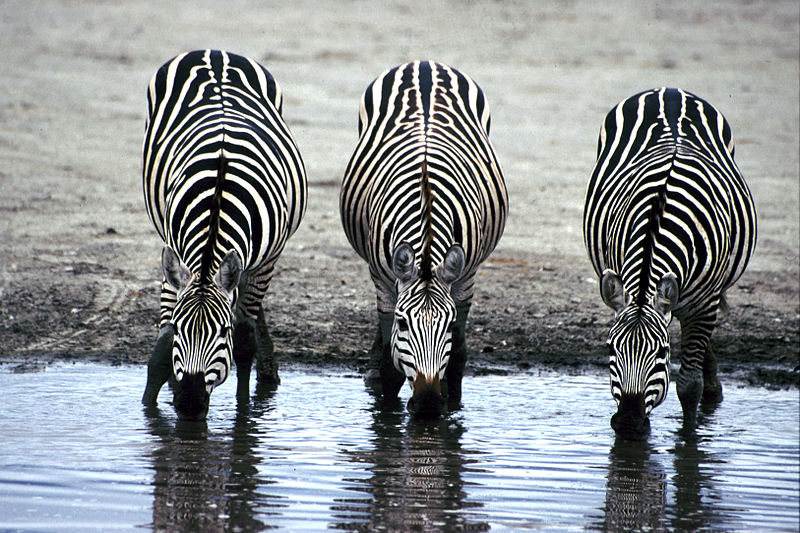Sawfish Facing Extinction
Sawfish are amongst the most threatened family of marine fishes. Overfishing and habitat destruction have resulted in many species disappearing from the coastlines of 46 countries. International conservation efforts and adequate fishing protections are required to prevent their complete extinction.
 Image: Forrest Samuels, CC BY-SA 2.0
Image: Forrest Samuels, CC BY-SA 2.0 Sawfish have disappeared from half of the world’s coastal waters and the distinctive shark-like rays face complete extinction due to overfishing, according to a new study that has been published in the journal Science Advances.
Sawfish, named after their unique long, narrow noses lined by teeth, called rostra, that resemble a sawblade, were once found along the coastlines of 90 countries but they are now among the world’s most threatened family of marine fishes, presumed extinct from 46 of those nations. There are 18 countries where at least one species of sawfish is missing, and 28 more where two species have disappeared.
According to the researchers Helen Yan and Nick Dulvy from Simon Fraser University, three of the five species of sawfish are critically endangered, according to the International Union for Conservation of Nature (IUCN) Red List of Threatened Species, and the other two are endangered.
Their teeth on their rostra are easily caught in fishing nets. Sawfish fins are among the most valuable in the global shark fin trade and rostra are also sold for novelty, medicine and as spurs for cockfighting. Habitat destruction is also a serious threat. Coastal and estuarine habitats, including mangrove and seagrass meadows, are often degraded by human developments and pollution, and these are important habitats for sawfish, especially their young.
The current presence of all sawfishes world-wide is unknown, but Dulvy warns complete extinction is possible if nothing is done to curb overfishing and to protect threatened habitats, such as mangroves, where sawfish can thrive. He says: “Through the plight of sawfish, we are documenting the first cases of a wide-ranging marine fish being driven to local extinction by overfishing. We’ve known for a while that the dramatic expansion of fishing is the primary threat to ocean biodiversity, but robust population assessment is difficult for low priority fishes whose catches have been poorly monitored over time. With this study, we tackle a fundamental challenge for tracking biodiversity change: discerning severe population declines from local extinction.”
The study recommends that international conservation efforts focus on eight countries (Cuba, Tanzania, Columbia, Madagascar, Panama, Brazil, Mexico and Sri Lanka) where conservation efforts and adequate fishing protections could save the species. It also found Australia and the United States, where adequate protections already exist and some sawfish are still present, should be considered as “lifeboat” nations.
“While the situation is dire, we hope to offset the bad news by highlighting our informed identification of these priority nations with hope for saving sawfish in their waters. We also underscore our finding that it’s actually still possible to restore sawfish to more than 70 per cent of their historical range, if we act now,” said Yan.





One Comment
Man and Nature at odds says Theodore Rooservelt in 1908 :see Before Nature Dies by Jean Dorst 1965. Capital is the only ‘value’ in a world where world is valueless. It is as Heidegger says all is in the ‘standing reserve’ of resources including the resource of the H.R.department. To be put to use in a world that is worldless is terrible and meaningless. The concept of world has disappeared along with it’s species .There is something wrong with education.(competition v co-operation) The covid crisis has shown us, that we will be incapable to turn around climate change. Baby boomers have betrayed us, I am ashamed of my generation. Neoliberalist policies will prevail as they have done over the last 40 years. Or how modernization destroyed the world in a 100 years. In a worldless world there is no sawfish to begin with. What is good for the world, and only man has a world according to Heidegger, is for man not to be in it. ‘To die quickly, or not to be born at all’ says Silenus We are entering the Post-Autonomous worldless world. That means the idea of the individual also vanishes. The we over the I prevails. Power v the powerless. There is a need to be more like Nietzsche and to revalue values that are handed down to us, as values are not eternal neither are laws. 50% of species lost in the U.K. already ? I despaired when I saw the photo of the sawfish, what I once saw as something wonderous as a boy in a book was the fantastical. Conservation and conservatism are not the same thing, one is about conserving power to itself, as in ‘taking back control’. There is no conservation in the worldless world. Nihilism is the order of things in the worldless world. The nihilism of the worldless world is total. In the revaluation of values only a reversal of values can return the world to itself and take back the names Earth and World as homecoming and belonging.